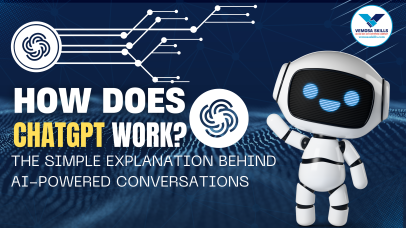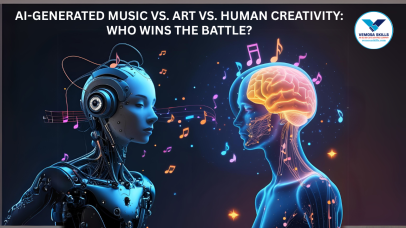How Does ChatGPT Work? The Simple Explanation Behind AI-Powered Conversations
Have you ever thought about how Chatgpt understands the questions you ask it and answers you so quickly and accurately? It may look like magic to us, but it is just the power of Artificial Intelligence (AI) and nothing else. In this blog, we will help you better understand this chatbot technology, i.e., Chatgpt, and explain in the simplest way possible how ChatGPT works by using simple real-life examples.
What is Chatgpt?
Chatgpt is an AI chatbot built by Openai company that can answer your questions, write stories for you, and summarise any information or data you need. It can understand your language and make decisions for you. Even if you feel unable to solve a problem, it can help you solve it, and it can even talk to you like a human being.
Look at it this way: it is a super-smart personal assistant that has read millions of books, articles, and websites, but it doesn't actually think like a human; it just guesses the best answer for you based on the patterns it has learned from the online information it has or the data you have given it when you use it.
How Does Chatgpt Work? Or How Do AI Chatbots Work?
To understand Chatgpt better, let's break it down into four major steps:
1. Learning from a Massive Amount of Text
Chatgpt learns from books, news articles, Wikipedia, blogs, and other sources available online and replies to you based on the same and understands your patterns in whatever information you ask for. However, it cannot “remember” facts like humans do. Instead, it looks for patterns in how words and sentences are used together and then replies.
Example: If you type into Chatgpt, “Tell me a joke,” Chatgpt doesn’t “think up” the joke like a comedian. It has already seen thousands of jokes online, and, based on them, it tells you the best relatable and accurate joke that it thinks you may like. such as:
"Why can't your nose be 12 inches long? Because then it would be a foot! 😆"
It thinks that you may like this joke because it is something that you can relate to and find funny. But if you don't find this joke funny, then you have to ask Chatgpt about the joke you want to read about in more detail, like, "Tell me a joke about the human body that people take seriously but is actually funny."
For this, Chatgpt may reply, "The human brain is amazing - it works 24/7 from the day you're born... until you have to introduce yourself in a meeting. 😂"
And if you still don't like this joke, then you have to give a more detailed prompt about what type of joke you want to read, and this loop will continue until you get the exact joke you really want to read and laugh at.
2. Understanding What You Mean
When you ask Chatgpt any question (known as a PROMPT in technical language), it breaks down your message into smaller parts that help you understand your message better.
Example: If you type, “What is the capital of France?”
Chatgpt finds important words from your question: “capital” and “France”
It searches for similar patterns in its learned data and finds, “Paris is the capital of France.”
It then makes a prediction and gives you the best answer with correctness: "The capital of France is Paris."
3. Creating an answer
Once it understands your question or prompt, Chatgpt uses a technique called next-word prediction to create a response. It chooses the most likely next word based on all the text it has read before.
Example: If you start a sentence with “The sky is...”
It then thinks the most likely words might be “blue”, “clear”, or “cloudy”.
Chatgpt then selects the best option for you based on context and previous conversations with you.
This is why, when you ask the same question repeatedly, sometimes there is a slight difference in the answer! Sometimes, it answers that "The sky is blue," and sometimes, "The sky is cloudy," etc., for the same questions.
4. Refining Answers with Human Feedback
Chatgpt doesn’t just rely on its first learning phase. Openai improves the model using Reinforcement Learning from Human Feedback (RLHF). This means that humans rate the AI's responses, from which it learns and tries to give you better answers than before
Example: If Chatgpt gives you a wrong answer, such as “The capital of France is London,” human reviewers correct it to help the AI become smarter and more trustworthy. Even as a user, you can review it too just by replying to ChatGPT that, "No, the capital of France is not London; it's Paris." Then it learns from it, makes corrections in its data, and gives the correct answer when anybody in the world asks it for the capital of France next time.





